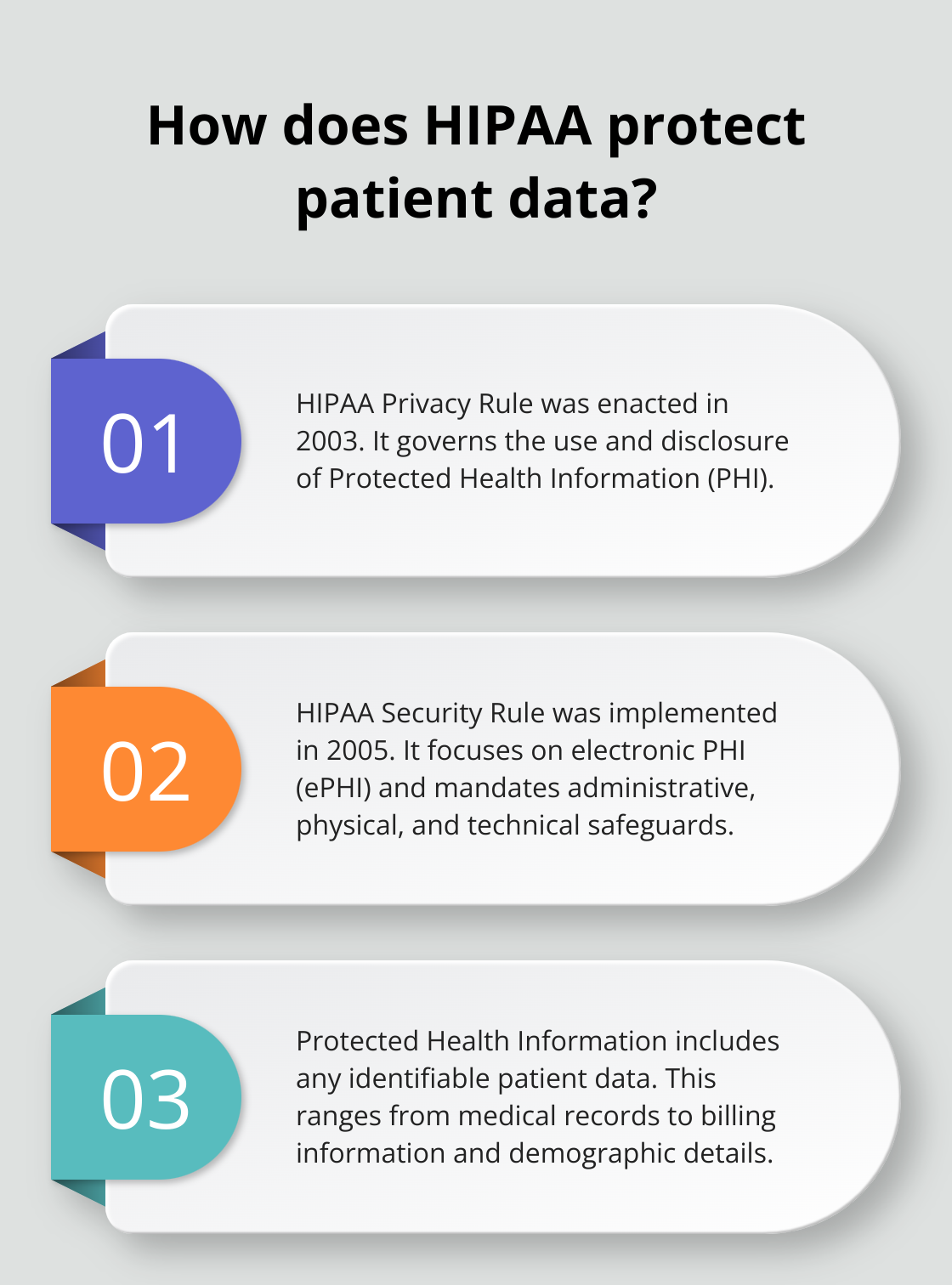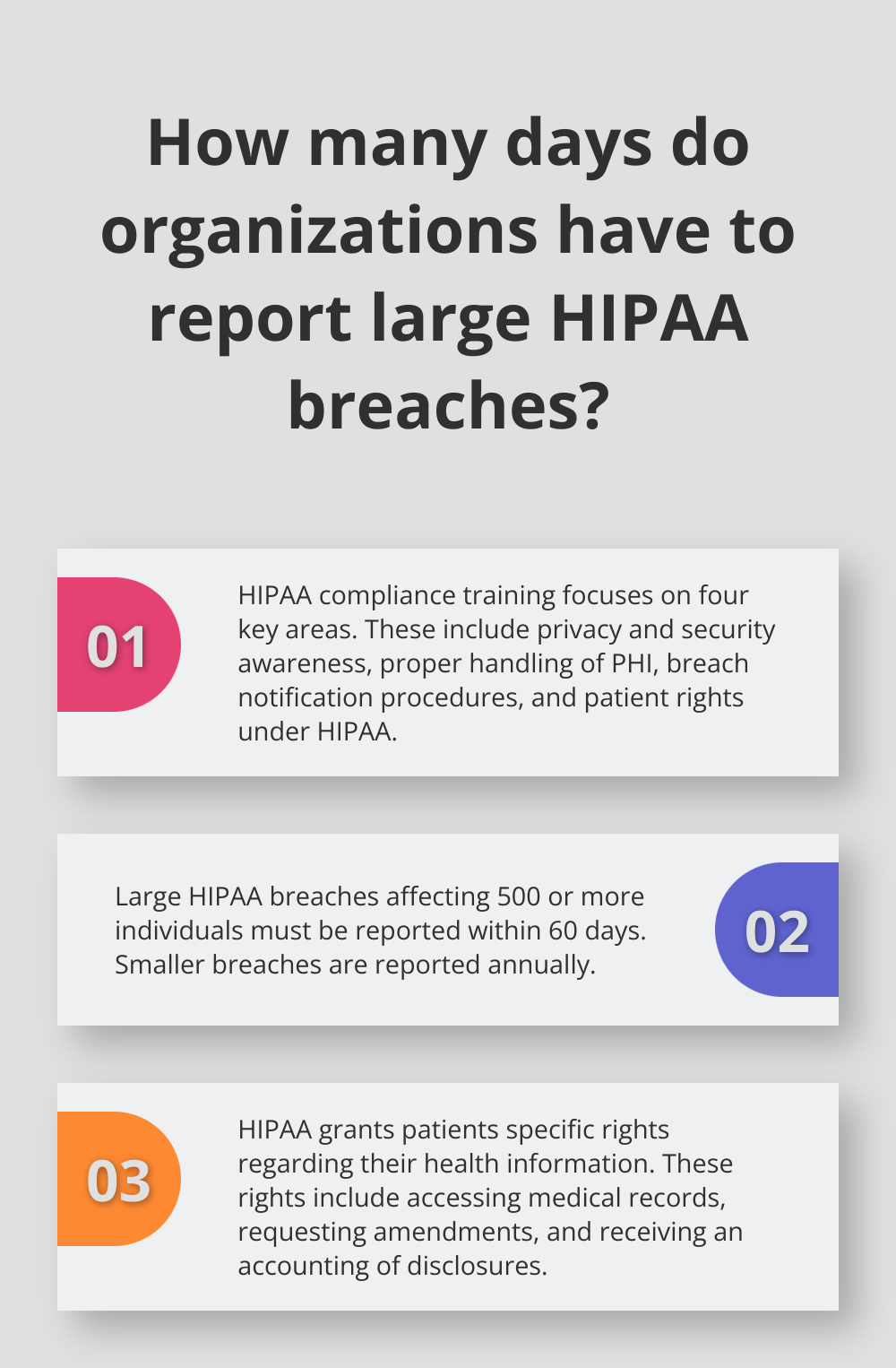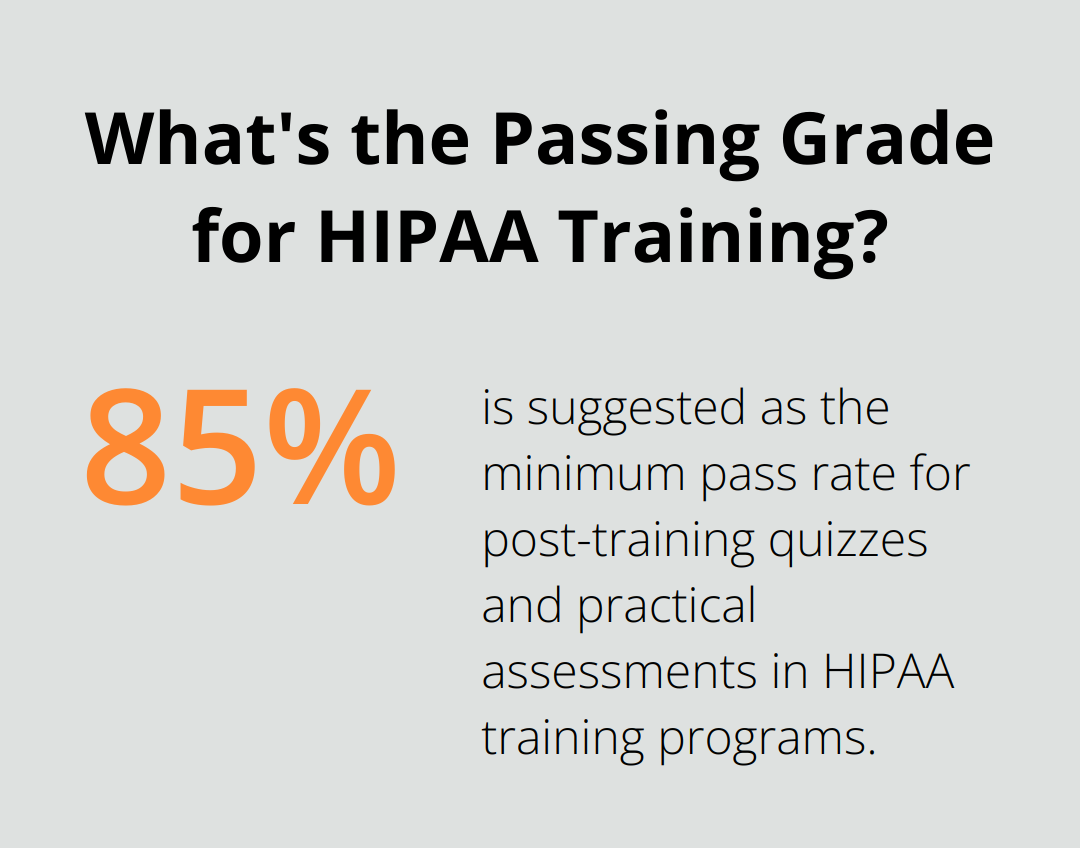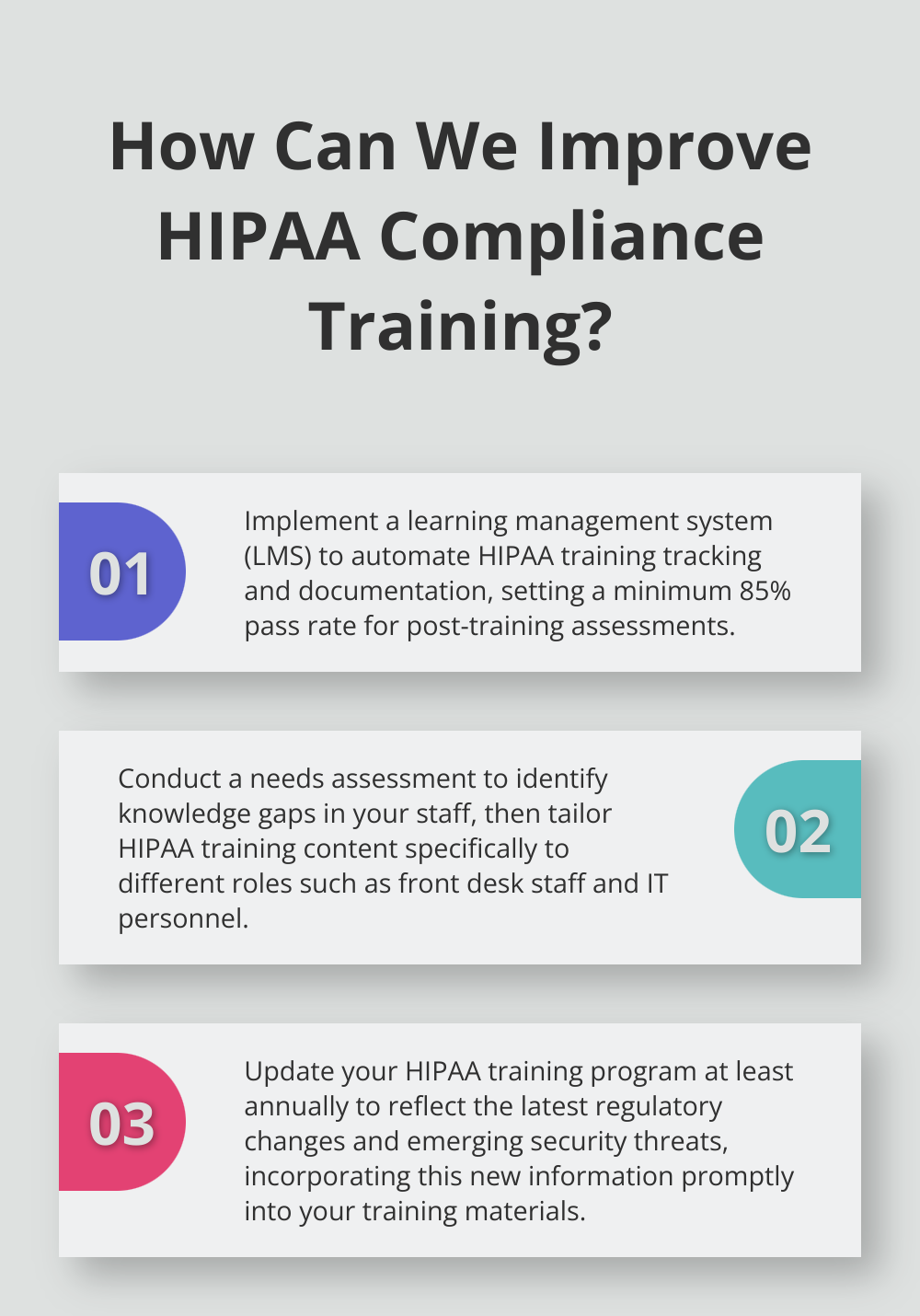HIPAA compliance training requirements are a cornerstone of healthcare data protection. At ScriberJoy, we understand the critical role these regulations play in safeguarding patient information.
This blog post will guide you through the essential components of HIPAA compliance training and provide practical strategies for implementing effective programs. We’ll explore key requirements, best practices, and the long-term benefits of fostering a culture of compliance in your healthcare organization.
What Are HIPAA Compliance Requirements?
HIPAA compliance requirements form the backbone of patient data protection in healthcare. These rules, established by the U.S. Department of Health and Human Services (HHS), set the standard for safeguarding sensitive patient health information.
The Core of HIPAA: Privacy and Security Rules
The HIPAA Privacy Rule, enacted in 2003, governs the use and disclosure of Protected Health Information (PHI). It gives patients control over their health information and sets limits on who can access it. The Security Rule, implemented in 2005, specifically focuses on electronic PHI (ePHI). It mandates appropriate administrative, physical, and technical safeguards to ensure its confidentiality, integrity, and availability.
Protected Health Information: The Heart of HIPAA
Protected Health Information includes any information in the medical record or designated record set that can be used to identify an individual. This encompasses a wide range of data, from medical records and lab results to billing information and demographic details.
Essential HIPAA Terminology
To navigate HIPAA compliance effectively, healthcare professionals must familiarize themselves with key terms:
- Covered Entities: These include health plans, healthcare providers, and healthcare clearinghouses that handle PHI.
- Business Associates: Any person or entity that performs certain functions or activities involving the use or disclosure of PHI on behalf of a covered entity.
- Minimum Necessary Standard: This principle requires that when using or disclosing PHI, a covered entity must make reasonable efforts to limit PHI to the minimum necessary to accomplish the intended purpose.
- Notice of Privacy Practices: A document that explains how a covered entity may use and disclose PHI and outlines an individual’s rights regarding their health information.
The Impact of HIPAA Compliance
HIPAA compliance affects every aspect of healthcare operations. From patient intake to billing processes, healthcare providers must integrate HIPAA requirements into their daily workflows. This integration ensures the protection of patient information and maintains trust in the healthcare system.

The consequences of non-compliance can be severe. HHS can impose fines ranging from $100 to $50,000 per violation (with an annual maximum of $1.5 million). Beyond financial penalties, healthcare organizations risk reputational damage and loss of patient trust.
As we move forward, it’s clear that HIPAA compliance is not just a legal requirement but a fundamental aspect of quality healthcare. The next section will explore the essential components of HIPAA compliance training, which are vital for ensuring that all staff members understand and adhere to these critical regulations.
What Are the Key Elements of HIPAA Compliance Training?
HIPAA compliance training forms a critical component of healthcare operations. Effective training programs focus on four key areas: privacy and security awareness, proper handling of Protected Health Information (PHI), breach notification procedures, and patient rights under HIPAA.
Building Privacy and Security Awareness
Privacy and security awareness training establishes the foundation of HIPAA compliance. This training should cover the basics of HIPAA regulations and their practical applications in day-to-day operations. Healthcare organizations must educate staff on the importance of maintaining patient confidentiality and the potential consequences of breaches.

Organizations should implement regular training sessions that include real-world scenarios and interactive elements to engage employees effectively. Ensuring HIPAA Compliance with robust cybersecurity measures and training is crucial to protect sensitive health data and prevent breaches.
Mastering the Proper Handling of PHI
Training on the proper handling of PHI proves crucial for maintaining HIPAA compliance. This includes educating staff on what constitutes PHI, how to securely store and transmit it, and when it’s appropriate to share this information.
To combat improper handling of PHI, training should cover proper disposal methods for both physical and electronic PHI (such as shredding documents and securely wiping electronic devices).
Understanding Breach Notification Procedures
Healthcare organizations must have a clear process for identifying and reporting potential breaches of PHI. HIPAA compliance training should outline these procedures in detail, ensuring that all staff members know how to recognize a breach and what steps to take if one occurs.
The HIPAA Breach Notification Rule requires covered entities to report breaches affecting 500 or more individuals within 60 days. Smaller breaches must be reported annually. Training should emphasize the importance of timely reporting and the potential consequences of failing to do so.
Educating on Patient Rights under HIPAA
HIPAA grants patients specific rights regarding their health information, and healthcare providers must understand these rights thoroughly. Training should cover patients’ rights to access their medical records, request amendments, and receive an accounting of disclosures.
Comprehensive training on patient rights can help organizations improve their response times and avoid potential violations.
These key elements in HIPAA compliance training programs help healthcare organizations create a culture of privacy and security. The next section will explore effective strategies for implementing these training programs to ensure maximum impact and compliance.
How to Create Effective HIPAA Training Programs
Tailor Your Training Curriculum
HIPAA training requirements state that Covered Entities must train members of the workforce on HIPAA-related policies and procedures relevant to their roles. Front desk staff may need more focus on patient rights and proper PHI handling, while IT personnel might require in-depth training on electronic safeguards.

Conduct a needs assessment to identify knowledge gaps and tailor your content accordingly.
Diversify Training Methods
Mix up your training methods to cater to different learning styles. Consider incorporating:
- Interactive e-learning modules
- In-person workshops with role-playing exercises
- Short, frequent microlearning sessions
- Virtual reality simulations for realistic scenario training
Keep Content Fresh and Relevant
HIPAA regulations evolve, and your training should follow suit. Update your program regularly to reflect the latest changes in legislation and emerging security threats. The Office for Civil Rights (OCR) recommends annual refresher courses at a minimum.
Implement a system to track regulatory updates and incorporate them into your training materials promptly. This proactive approach will help you avoid compliance issues in the future.
Measure Training Effectiveness
Implement robust tracking and documentation systems to ensure all employees complete required training. The American Health Information Management Association (AHIMA) suggests using learning management systems (LMS) to automate this process.
Go beyond completion rates. Assess knowledge retention through post-training quizzes and practical assessments. Set a benchmark (such as a minimum 85% pass rate) and provide additional support for those who don’t meet it.
Encourage a Culture of Compliance
Create an environment where HIPAA compliance is valued and prioritized. Encourage open communication about potential risks and violations. Recognize and reward employees who consistently demonstrate good HIPAA practices.
Regular team meetings to discuss HIPAA-related topics can reinforce the importance of compliance and keep it at the forefront of everyone’s mind. This approach will help embed HIPAA principles into your organization’s daily operations.
To ensure ongoing compliance, it’s crucial to implement comprehensive employee training programs on HIPAA regulations. These programs should cover not only the basics of HIPAA but also specific areas such as EMR usage and cybersecurity best practices, which are essential for maintaining HIPAA compliance in today’s digital healthcare environment.
Final Thoughts
HIPAA compliance training requirements form the foundation of patient data protection in healthcare organizations. Comprehensive and effective training programs equip staff with the knowledge and skills needed to handle Protected Health Information responsibly. These programs also help healthcare providers meet legal obligations and foster a culture of trust and security.

Robust HIPAA training programs offer numerous benefits beyond mere compliance. They enhance overall data security, reduce the risk of costly violations, and improve patient satisfaction. Well-trained staff members provide better service to patients while maintaining the highest standards of privacy and security.
At ScriberJoy, we understand the importance of HIPAA compliance in healthcare documentation. Our medical transcription software combines AI technology with human verification to provide accurate and HIPAA-compliant medical documentation. We help healthcare providers focus on patient care while maintaining high standards of data security and privacy.

Leave a Reply
You must be logged in to post a comment.